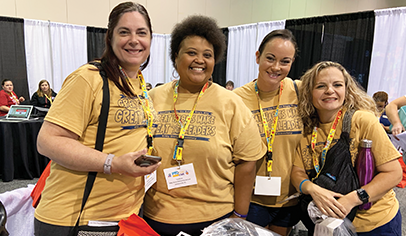How do you measure success—the amount of money you raise in a year? The number of people who attend events? How many volunteers you attracted? Maybe personal satisfaction factors in.
In fact, success, like beauty, is in the eye of the beholder. Your officers might see things one way, parents you’re reaching out to might see them another, while the principal and teachers might have an altogether different view.
A great way to get an accurate read of how your group is doing is through an involvement inventory—an objective, inside-out, top-to-bottom review of your activities and involvement efforts. It’s not hard; it’s just a matter of a handful of communication steps.
Gather feedback from officers and committee chairs. Hold a year-end meeting with the people who are most dedicated to your group. Find out what they have to say about their roles. You might even consider having each person write a brief self-assessment of her performance and list any obstacles or issues she faced. These assessments can give you some clarity about which programs and activities went well, which ones need to be adjusted, and which leaders need additional training (or perhaps some TLC).
For example, your group might have exceeded its fundraising goals this year, but at what cost? Is the fundraising chairwoman burned out? What will it take to get her to return next year? Can you find her a cochair if she needs one?
Meet with the principal. In some ways, your principal is the eyes and ears of the school. If your group is suffering from a perception problem on the part of parents or teachers, the principal will know. Tell her you’d like to find out whether any specific concerns were raised about the PTO by any of its members. Reassure her that the names can remain confidential; you’re interested in what issues were brought up, not necessarily who was talking about it. If the principal says that the school community sees your group in a positive light, you definitely want to know that, too—so your officers can keep up the good work!
Count ’em up. You ran several terrific events for families during the year; congratulations! Was it the same few hands volunteering each time, or did you regularly involve other interested parents? Find your volunteer sign-up sheets from the beginning of the year. How many new faces did you call upon? Was your group able to effectively match abilities and schedules? Why or why not?
Survey parents. As difficult and maybe even unfair as it may be for dedicated volunteers to hear anything negative about their efforts, your group has to be open to constructive criticism. Likewise, if your group has had some standout successes, you can recreate them better if you know what they were.
The survey doesn’t need to be elaborate; a short and simple “How’d We Do?” such as those found on restaurant tables will suffice. Ask your members to rate everything from family nights to fundraising. Be sure to leave space for additional comments and suggestions.
Publish the data. Sharing the results of your group’s performance, even your areas of weakness, shows parents that the PTO’s leaders value their input and are open to change. What’s more, when you publicize the positive things that parents say about your group’s activities and events, it’s another public reminder about all the great work the PTO has done. It might also get new parents excited about joining your group.
Learn from your results. Once your leaders are done writing down and discussing the gains and setbacks of the past year, your parent group will have a blueprint for next year’s involvement plan. Revisit it every few months to check that you’re still on track.
It’s never the wrong time to take an involvement inventory; the results will give you and your leaders an accurate and valuable assessment of your successes at school.
























